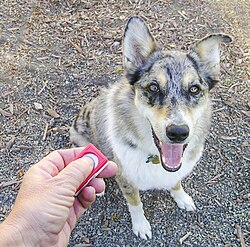Penalty training refers to a method of discipline that involves punishing your dog when they disobey commands or display dominance. This approach aims to decrease the likelihood of such behavior recurring. If implemented correctly, penalty training can be an effective way to instill discipline in your dog.
Direct Interactive Punishment
Direct interactive punishment involves actions such as grabbing your dog by the collar, hitting, or pinning them to the ground. These actions can induce fear in your dog, potentially leading to undesirable behaviors like growling and snarling. This form of punishment may result in your dog developing a fear of you.
Remote Punishment
Remote punishment involves monitoring your dog’s behavior from a distance, often incorporating booby traps. If your dog exhibits problematic behavior in certain areas, you can set up traps that activate when the dog misbehaves. This deters the dog from repeating the behavior in those locations, contributing to behavioral correction.
Positive Punishment
Despite the term “positive,” this punishment method involves causing physical discomfort to your dog. Techniques include shock collars, leash pops, and shaker cans.
Using shock collars can cause psychological distress, skin injuries, and other health issues in your dog. Similarly, shaker cans can affect your dog’s hearing. Positive punishment is generally discouraged as a training method due to its potential harm.
Negative Punishment
Contrary to the term “negative,” this method is generally a more benign way of correcting your dog’s behavior. Negative punishment involves withdrawing rewards when your dog misbehaves or disobeys a command. This method encourages dogs to avoid unwanted behavior as it leads to the removal of their favorite things.










